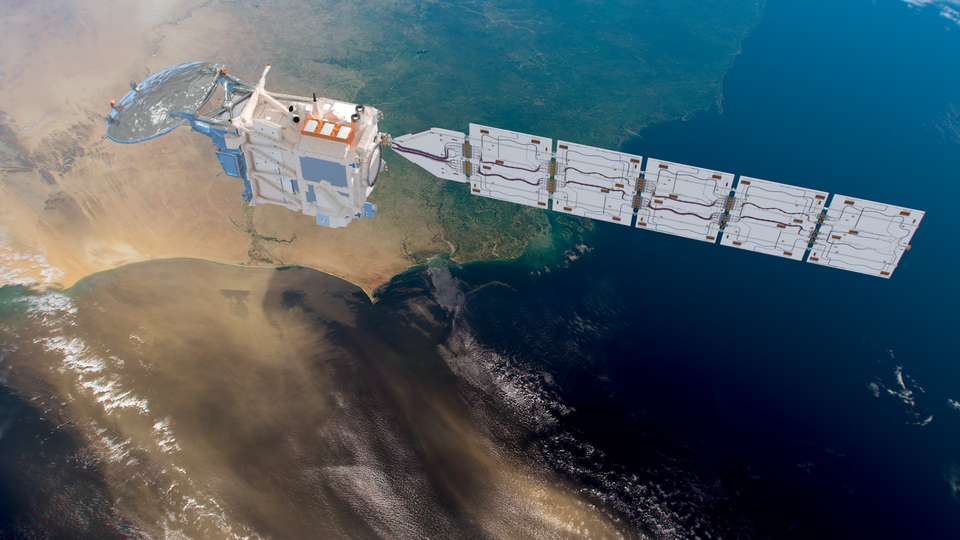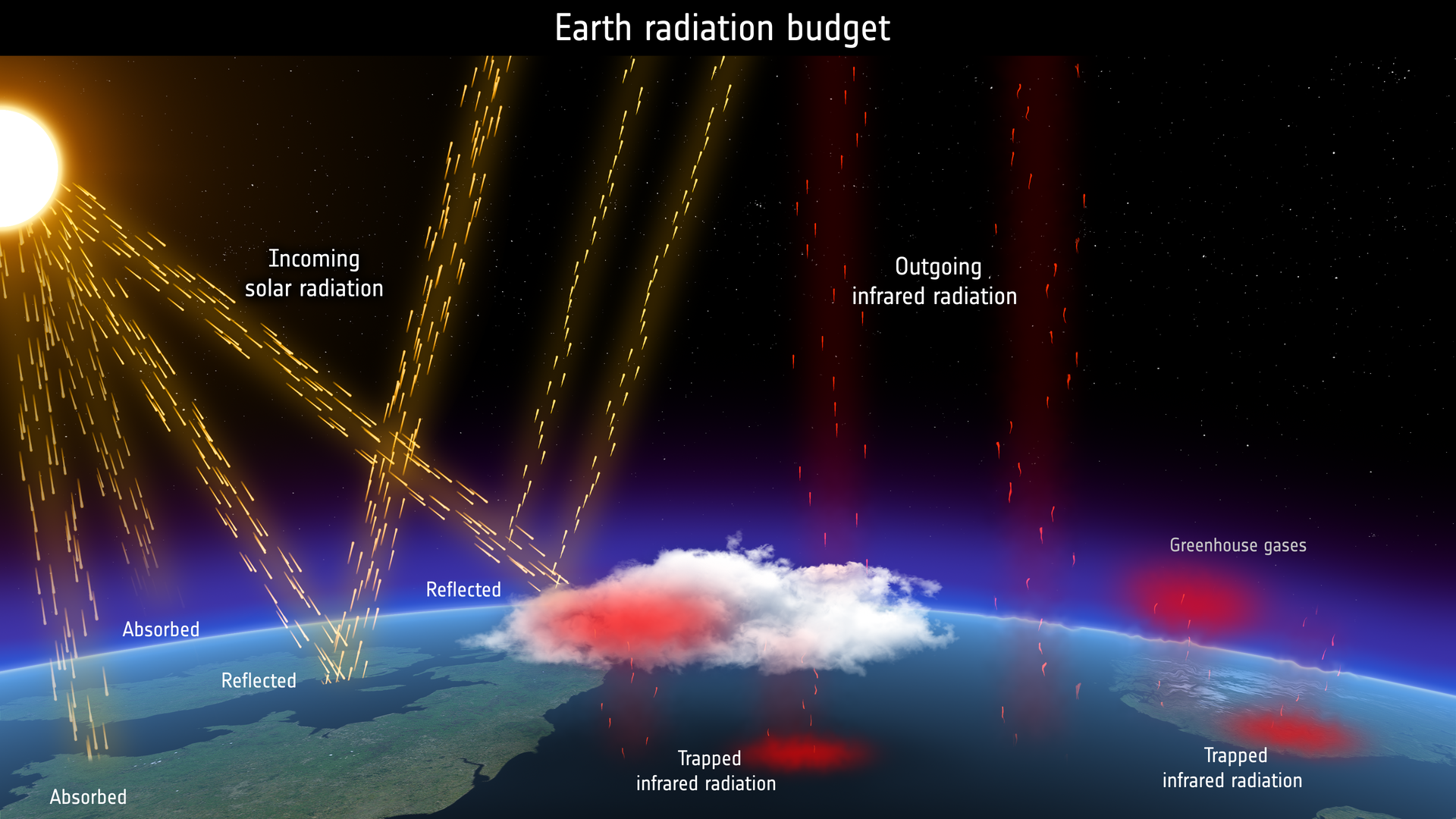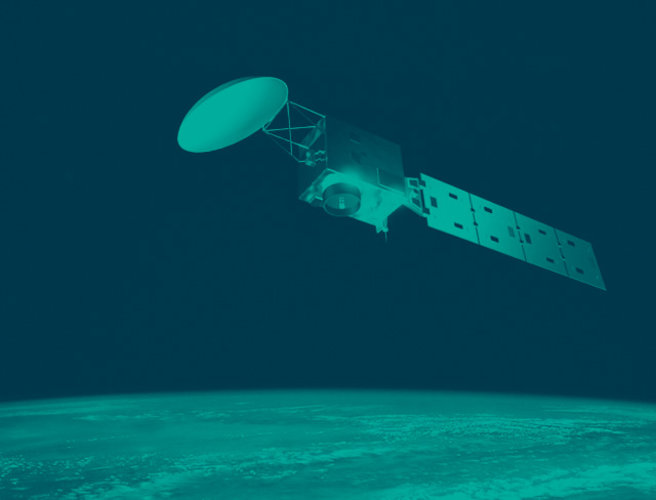Earth’s radiation budget, clouds and aerosols
The delicate balance of Earth’s radiation budget is a key factor in regulating our climate – the budget integrates almost all of the physical processes affecting Earth’s climate.
The radiation budget describes the overall balance between incoming energy from the Sun and outgoing reflected (shortwave) and thermal (longwave) energy from Earth. This balance is crucial for maintaining a relatively stable temperature on our planet and is influenced by various factors, including clouds, aerosols, greenhouse gases and surface properties.
Understanding and monitoring Earth's radiation balance is crucial for studying and addressing climate-related issues, and something that can only be done from space.


Access the video
Cloud
Incoming sunlight fuels our climate. It covers the ultraviolet spectrum, peaks in the visible and extends into the shortwave infrared, to wavelengths of about 4 micrometre. Some incoming radiation is absorbed, scattered and reflected inside the atmosphere before it reaches Earth’s surface. Clouds partly shield the surface from solar radiation by reflecting radiation back into space.
Earth emits thermal infrared radiation into space, cooling the planet. Thermal radiation is also reflected by cloud cover, trapping outgoing thermal radiation, which leads to heating. Whether the net effect results in cooling or heating, depends on the microphysical and 3D structure of the cloud.

The properties of clouds and their extent vary enormously. They range from almost invisible thin layers, yet radiatively significant, to deep cumulonimbus towers or huge cyclone systems.
Through their direct impact on atmospheric heating rates, they are strongly coupled to atmospheric temperature, humidity and dynamics.
Put simply, an increase in atmospheric temperature might lead to higher rates of water evaporation and increased convective activity, which would lead to increased cloud formation, in turn, leading to higher reflection of incoming solar radiation.
Comprehensive global observational datasets of the 3D structure and composition of cloud are necessary to improve our understanding of these processes to model them properly in numerical atmospheric models.
Aerosols
Aerosols play a smaller role in atmospheric radiation compared to clouds, but certain aerosols act as cloud condensation nuclei necessary for the formation of clouds.
It is important to quantify and distinguish between different types of atmospheric aerosol in the context of cloud research.
Finally, the measured clouds and aerosols needs to be linked to atmospheric radiation. For this purpose, the observed scenes of clouds and aerosols need to be complemented by measurements of the reflected solar and emitted thermal radiation.

Thanks to EarthCARE’s suit of four different instruments, the satellite will collect simultaneously measurements of cloud and aerosol profiles together with solar and thermal radiation to include these parameters in numerical weather and climate models.
As an added benefit, EarthCARE aerosol data will be valuable for air-quality analyses and services.
EarthCARE cloud profile observations will be assimilated into numerical weather prediction models, to quantify the impact of this new type of observation on weather forecasts.








